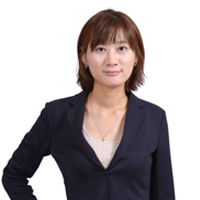Reality check: How diverse is Korea really? Age and politics (2)
Fifty-somethings are biggest age group in Korea and they control parliament, nearly half of Cabinet
By Shin Ji-hyePublished : Jan. 23, 2024 - 13:08
Across cultures and political systems, a common trait is that those in decision-making roles, particularly in politics and state governance, are often older than the average voter.
This observation holds true in the context of South Korea’s unicameral parliament and central government, where the decision-making process is predominantly controlled by people in their 50s and 60s.
Before delving into age representations in the parliament and government, here's a quick overview of Korea's population makeup: The largest age group is 50-somethings, accounting for 16.8 percent, followed by the 40s at 15.55 percent and 60s at 14.73 percent. The median age of South Koreans is 46.

The average age of the members of the 21st National Assembly stands at 54.9 years, with the majority falling within their 50s.
In the inaugural session of parliament in 1948, lawmakers in their 40s constituted the largest portion of members. Since then, there has been a noticeable trend toward older parliaments, mirroring demographic changes in South Korea.
Over at the executive branch, those in their 60s dominate government leadership roles.

Of the country’s 8 presidents, elected after direct presidential elections were restored in 1987, 5 were in their 60s at the start of their terms, 2 in their 50s and one in his 70s.
As of Jan. 18, the government is run by 63-year-old President Yook Suk-yeol, 74-year-old Prime Minister Han Duck-soo and 19 ministers in their 50s through 70s.
Is South Korea really becoming more diverse? The Korea Herald offers a reality check by examining data on representation in the fields of politics, business and society according to gender, age, ability, sexual identity and nationality. A complete version of this series was printed in the Jan. 2 edition of The Korea Herald. – Ed.





![[Herald Interview] How Gopizza got big in India](http://res.heraldm.com/phpwas/restmb_idxmake.php?idx=644&simg=/content/image/2024/11/20/20241120050057_0.jpg&u=20241120164556)

![[KH Explains] Dissecting Hyundai Motor's lobbying in US](http://res.heraldm.com/phpwas/restmb_idxmake.php?idx=644&simg=/content/image/2024/11/20/20241120050034_0.jpg&u=)

![[Kim Seong-kon] Farewell to the vanishing John Wayne era](http://res.heraldm.com/phpwas/restmb_idxmake.php?idx=644&simg=/content/image/2024/11/19/20241119050096_0.jpg&u=)
![[Graphic News] 70% of S. Koreans believe couples can live together without tying the knot: survey](http://res.heraldm.com/phpwas/restmb_idxmake.php?idx=644&simg=/content/image/2024/11/19/20241119050098_0.gif&u=)







![[Today’s K-pop] Blackpink’s Jennie, Lisa invited to Coachella as solo acts](http://res.heraldm.com/phpwas/restmb_idxmake.php?idx=642&simg=/content/image/2024/11/21/20241121050099_0.jpg&u=20241121172748)